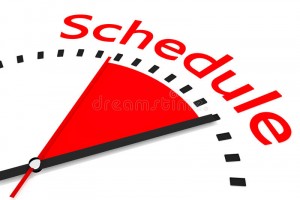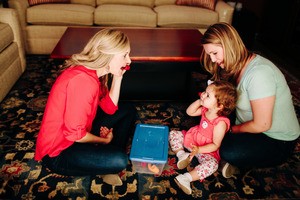
Autism Series VII: Parental Participation in Intervention
Autism Series VII: Parental Participation in Intervention
How Parental Participation in Intervention Autism Series?
Intervention for a child with Autism or ASD should focus on his /her core characteristic as well as his / her individual needs. Parents should be a part of the intervention journey with their child. This article delineates what a parent can expect and do during the intervention process and therapy session for a child with ASD. Intervention and therapy, in this article, refers to therapies such as speech-language, occupational or physiotherapy etc. and not medical and/or biomedical interventions.
Here we begin the discussion on how parents can participate meaningfully in the therapy session.
1. What to expect during a therapy session? How can I help settle my child in therapy?
Intervention sessions typically are conducted for up to an hour wherein goals suitable for the child will be worked upon. The sessions can be conducted at a centre or at home. If the therapy is clinician based – the therapist would be carrying out the same. For family-based intervention, parents/caregivers will be trained by the therapist to provide intervention to the child.
The approach (such as ABA, RDI or naturalistic etc.) of the intervention defines the materials, activities as well as the way the therapy will be undertaken. This would typically be discussed during intake to the sessions, program or centre.
A child with ASD may have anxieties or sensory issues. Therefore, it may take time for him/ her to settle in with a (new) therapist or a new environment.
What can I, as a parent, do to help my child settle in to the sessions?
It is best for the caregiver or parent to assist the therapist in understanding the child – especially with regard to the anxieties, if any and if not discussed during intake.
Encourage the child to interact and play with the therapist. If a parent shows confidence in the therapist, the child will surely follow over time. Additionally, if permitted (check before the session!) bring a toy the child likes to the session. The initial rapport created is a beginning of a bond between the therapist and child, which is important for further learning and teaching.
2. What goals are followed in the therapy sessions? How can I be involved in the planning process?
The goals chosen for a child would be customized to the individual skills and needs. Therapists would prepare long-term as well as short-term goals. Long-term goals are bigger in nature and are generally aimed to be achieved in 6 months or a year (e.g. saying three-word sentences). Short-term goals are generally monthly goals and many short-term goals will assist in achieving the long-term goals (e.g. using 10 verbs meaningfully).
The goals and plan of action would be discussed with the caregiver/s during the initial stages of therapy or before starting therapy.
How can I, as a parent, be involved in the planning process?
Therapists would provide suggestions for goals based on their thorough assessment of the child. A parent knows their child well and also may have some inputs for the plan. A plan agreed upon by the clinician and parent is always a good one. When the goals sheet is shared with the parent, the parent / primary caregiver(s) can-
- Understand all aspects of it. Discussing aspects of the plan that are unclear is always healthy.
- Request for examples. Examples of activities can be asked for, especially if the goal is a current one. A therapist may suggest giving the examples of activities during the session when s/he is carrying them out. This question would allow therapists to understand how many examples to share with you.
- Share goals that you would want the child to achieve. A therapist may like to take the goal into consideration. However, skills are achieved in a hierarchy or pattern and goals are planned similarly. Therefore, if the goal requested is a broader or generic one, it may be taken up later or as a long-term goal.
3. What activities are taken up for a therapy session? What activities can I, as a parent, conduct with my child?
A therapist would carefully plan activities and materials for a session and then carry them out with the child. In the clinician-based intervention, a therapist will carry out say, 5 to 8 different activities during a therapy session. Target goals are reinforced multiple times through the sessions.
Each therapist would have their own unique style and personality when delivering the activities. However, the therapists would encourage, and many would help parents/caregivers plan for activities to be conducted at home.
Many children with ASD need repeated inputs in a variety of ways to be able to learn a new skill. They need regular and consistent inputs.
What activities can I (the parent / caregiver) conduct at home?
Several therapists would guide parents through this process. Involving parents/caregivers to strengthen a skill is important since they would be able to repeat the learning multiple times.
Parents/caregivers can do the following:
- Replicate the same activities that the therapists are conducting, provided they have the same toys (e.g. building activity using Lego blocks). Alternately, carry out the same activity with similar materials (e.g. building activity with wooden blocks or stacking cups).
- Learn new activities to carry out within the same goal. For example, to build the skill of aiming to throw- the therapist may use a basket and basketball, but a parent can be suggested to use bean bags and a bucket. Asking the therapist is the best beginning point for this. A parent/caregiver can always think out of the box.

- Teaching the same skill within the home environments. Look at the activities in the session/s and think about how to apply it in the home situation with the items used in daily life. For instance, if the child is learning to say ‘open’ – the clinician may use a box or a book to teach it. A parent can then use the same across different situations at home e.g. open ‘door’, open ‘ cupboard’, open ‘ fridge’, open ‘ diaper’ etc.
- Repeating the skill many times with different people and in different situations. If a child is learning to say ‘hello’, teach him the same with puppets, relatives who may visit, neighbours or even over the telephone. This is crucial for ‘generalization’.
- Thinking out of the box. After discussing with your therapist, there may be activities that can be conducted out of the home environment that may benefit the child’s current goals such as swimming or cycling. These may be fun for the child and a great break from the sit down activities.
- Be consistent. Carry out the activities every day diligently.

- Set a schedule. Setting aside time within the daily schedule to carry out the activities is important. Ensuring that it is at the same time, as often as possible is also important. Several children with ASD need this consistency and predictability to learn.
- Involve family members and siblings to carry out specific tasks with the child on a daily basis. For example – the grandparents may be able to take the child out of a leisurely walk while talking about the things they see. A sibling may be able to sit with a book with the child and read it out to the child.
Such involvement by parents / caregivers become important and at times is crucial when the number of sessions within a week or month is limited or low.
4. Is the therapy helping the child? How can I know iif mychild is benefitting from the therapy sessions?
Therapy for children with ASD is typically long term. Changes are seen in the child; however progress may not always be fast paced. It is important to note the subtle changes consistently.
Children with ASD will need intervention across several skill areas. Parents must be able to note changes in several areas while also understand how improvement in one area (such as motor skill) may impact progress in another (such as speech or communication skills).
What should I look out for?
A parent –
- Can be guided by the therapist to note the subtle yet significant changes in the child. Many times, changes that happen initially are for basic yet important skills such as building attention. These skills are as crucial to stabilize as other core skills such as speech skills.
- Should be aware that significant changes may not happen over a short time (such as a week’s duration of therapy). Changes of significant nature would only be noticed over consistent therapy for a few weeks or months.
- Can view reassessments from time to time with the help of the clinician and understand the changes.
- Will benefit from being patient with results while laying faith and confidence in trained and experienced clinician(s).
***
This article is a part of the Autism Series. Read on to learn about intervention and other topics. Subscribe with us to receive the latest article in your mail!
***
If you wish to know more about Speech Therapy, kindly contact us at info@1specialplace.com
For more ideas check out our other blogs
- What is speech therapy and what Speech Therapist Do? - December 22, 2022
- 5 Simple Ideas to Make Flashcards Fun - June 28, 2018
- Should I use ‘NO’ with my child? - June 24, 2018


Leave a Comment
(0 Comments)